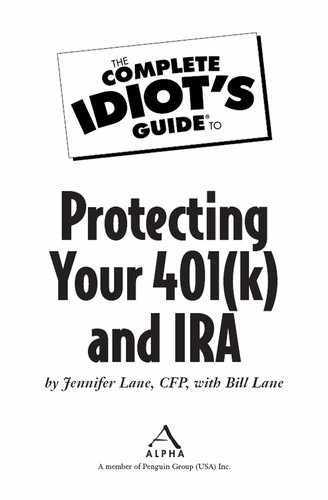Pension Planning: Know the Numbers
When you retire early, you need to carefully compare your benefit options under your pension plan. Most pensions have four options:
• Lump sum distribution. This option allows you to receive a one-time lump sum distribution that you can roll over into an IRA and manage the way you take payments yourself. This benefit amount can often be too low to provide you with what you would receive through one of the other income options that follow, but can be a good option if you’re concerned about the long-term ability of the company to make the pension payments or if you have a health issue that makes you less concerned with outliving your money and are more worried about leaving money to your heirs.
• Option A, single-life annuity. The single-life annuity pays the highest income amount but only pays during the lifetime of the pensioner. There is no benefit for the pensioner’s widow.
• Option B, annuity with one-third spousal benefit. This option usually pays about two thirds of the full single-life benefit to the pensioner and then, after the pensioner’s death, pays an amount equal to one third of the income to a widowed spouse.
• Option C, which pays the same reduced payment for the life of the pensioner or the surviving spouse. This option pays a 50/50 benefit. The monthly income amount is about half what it would be under the single-life option, but it remains the same after the pensioner’s death for as long as the widowed spouse lives.
Other pensions may have more options, but they’re always a variation on these basics.
In most cases, you can’t change the option you choose once you start receiving a benefit. Some pensions, fortunately, will automatically reset to the full single-life annuity benefit if the spouse dies before the pensioner.
The lump-sum option often isn’t available until you reach a typical retirement age such as 60 or 65, and in most cases it is substantially smaller than what you would be collecting through the regular income options A, B, or C. So if you’re retiring early, you’ll need to either wait for the lump sum to be available or pick one of the income options. Once you choose and start receiving payments, you can’t change to another option. This is fine if you’re single and just need to pick the single-life options, but it can be a problem if you’re married and need to pick one of the lower-paying options with the spousal benefit.

Rainy Days
Most pensions require a spouse’s signature if a married retiree opts for option A single-life or the lump-sum options because plan administrators are concerned that the spouse may not enjoy enough of the pension benefit if the pensioner dies.
The difference between the single-life income amount and the lower payments under option B or the still-lower paying option C is essentially like a life insurance policy on the person receiving the pension. The death benefit of the life insurance policy funds the spousal benefit part of the pension and pays the income to the spouse after the pensioner dies. Complications arise if you’ve chosen option B or option C and the spouse dies first. Because B and C pay less and benefits can’t be changed once they’re started, the pensioner is left at the lower pension amount, even though he no longer has a spouse to protect. This is like paying life insurance for no reason.
Some pensions solve this problem by automatically resetting to the full single-life benefit—option A—from option C if the spouse dies first. If your pension doesn’t offer this reset benefit, use one of the calculators at www.Dinkytown. com to calculate whether or not it would be best to take the full single-life benefit and then use part of that additional income to buy a life insurance policy on yourself to benefit your spouse. If you die and your pension benefit stops, the policy would pay a death benefit, which your spouse could then use to replace the income loss of your pension. If your spouse dies first, then you can cancel the policy, and you’ll still be at the higher single-life benefit.

Rainy Days
Not all pensions allow for unmarried partners to receive the “spousal” pension benefit. Take extra care to read the benefits description for the pension to be sure you understand who is covered and who isn’t. If necessary, you may need to pick option A and then protect your beneficiary by buying a life insurance policy.
..................Content has been hidden....................
You can't read the all page of ebook, please click here login for view all page.
